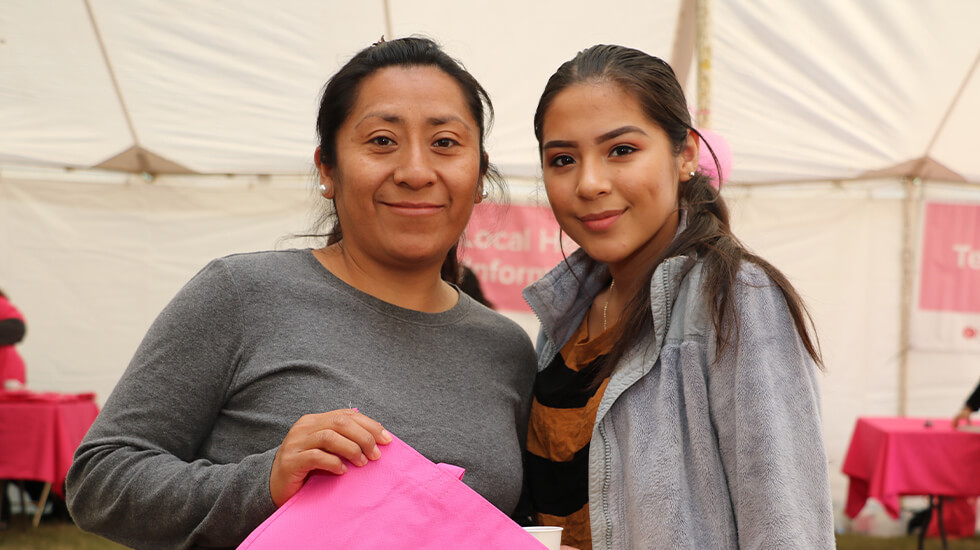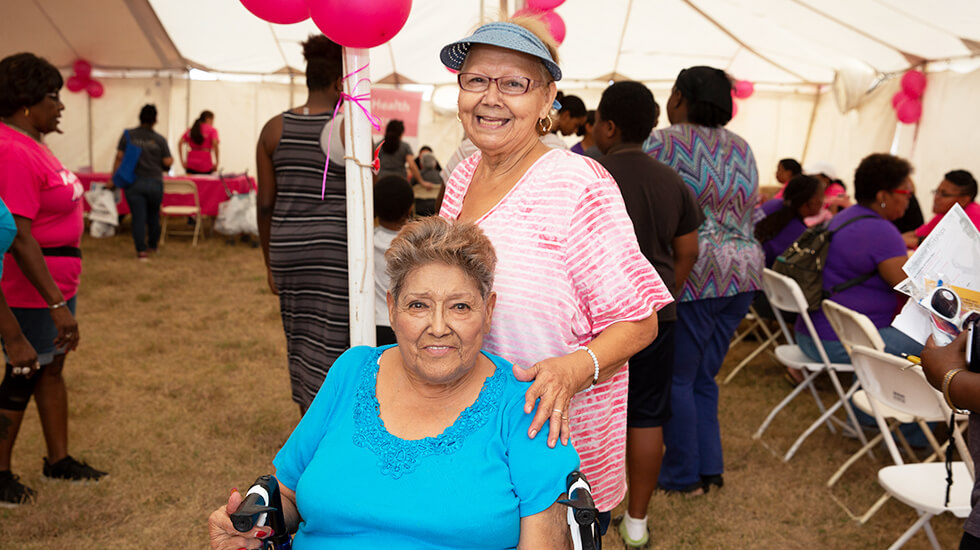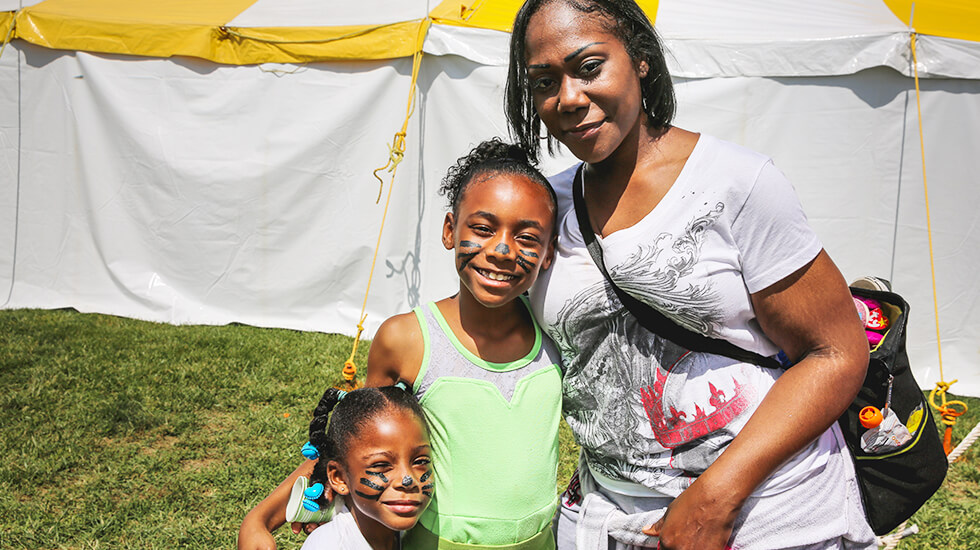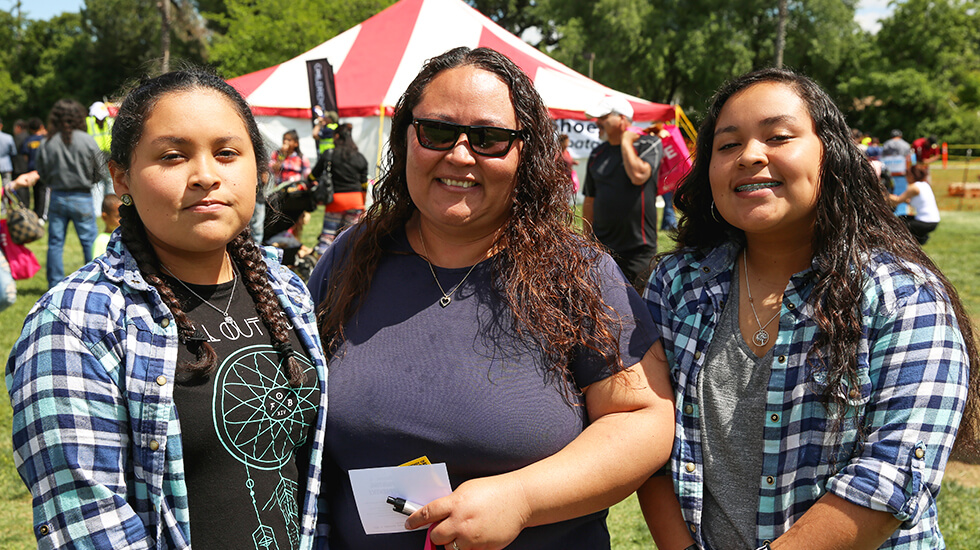


Note: Written by NBCF Chief Program Officer, Douglas Feil. If you missed our first post, read “Disparities in Breast Cancer Threaten Progress for All.”
Like the disease, disparities in breast cancer are bigger than any one organization. The problem is complex, and the solution requires all of us.
One reason cancer is so destructive is that it hijacks the very structure of the body—the cell.
Similar to health disparities, cancer thrives off vulnerabilities and environments where it can grow unchecked.
And that’s just it—health disparities also exist in a world unchecked. Health equity is possible, but it will take a reckoning to achieve.
Here’s a start that paints a small picture of what is possible. We must first:
It may be hard to imagine, but there are thousands of breast cancer charities in the U.S., each with its own mission and goals. All of them want to help or make life better in some way for those affected by breast cancer. Since we know disparities in breast cancer are bad for everyone and we know the problem is bigger than just the disease (societal, socio-economic, etc.), we have more reason to come together to tackle an issue bigger than all of us—inequality.
When the pink ribbon and National Breast Cancer Awareness Month (October) emerged in the early 1990’s, an industry was born. Breast cancer charities and foundations formed across the country. Breast cancer, a once stigmatized topic, was now front and center—featured on magazine covers and the evening news and cause-marketed on top brands at every local supermarket.
As the industry grew, competition for fundraising dollars added pressure to the initial synergy. It became hard to collaborate or find common ground on issues that impacted women diagnosed with breast cancer. Promises were made—free mammograms, coverage for the uninsured, equal access to treatment, a cure. But here we are—decades later—with entire swaths of our population carrying the weight of possibilities unfulfilled.
As we celebrate 30 years of progress, we need a reawakening in the breast cancer industry. We need to see problems like disparities in breast cancer as a call to action and an impetus to foster unadulterated collaboration. Anyone trying to move the needle on health disparities in breast cancer should be considered. Anyone accomplishing breakthrough results should be championed by all.
Last year, Susan G. Komen launched a major health equity initiative—Stand for H.E.R.—which focuses on decreasing breast cancer disparities in the black community by 25% in 10 U.S. cities where inequalities are greatest.
Their work is based on landscape analyses and follows a roadmap to success. Everyone in the breast cancer community should be rooting for this work and doing everything they can to help it succeed. Even if not invited to the table of collaboration, there are things we can all do to share their message and support their work, because its success means a move in the right direction toward health equality. Success for this program is lives saved—a common goal for everyone.

In Harriet Washington’s award-winning book, Medical Apartheid, she examines one of the roots of health disparities—mistrust.
When fear is forged, trust is lost. For centuries, black Americans were subject to mistreatment and abuse by the medical community. Stories like the Tuskegee Syphilis Study and Henrietta Lacks haunt the psyche of generations of black Americans to this day. As a result, many simply don’t trust the overall medical community to consider their best interests.
If you don’t have trust in an institution because of a prior experience or historical precedence, it’s easy to understand a reluctance to schedule an annual mammogram or come back for a follow-up biopsy.
Earning trust after it’s broken is hard. You have to apologize, accept responsibility, make amends, and then patiently allow time to bridge trust. If those first steps aren’t taken, it could take even longer.
In 2015, the National Institutes of Health launched the All of Us Research Program, an initiative to accelerate health and medical breakthroughs, enabling individualized prevention, treatment, and care.
The program also has the goal of reestablishing trust in communities historically harmed by medical experimentation. The program is offered in Spanish and English and requires full consent of participants. The goal is to enroll over 1 million participants of ethnically and racially diverse backgrounds. Hundreds of thousands of people have enrolled so far, and the vast majority are historically underrepresented in research—a positive sign that trust can be restored.
If this project works, research will lead to treatment advancements that accelerate lives saved and close the gap in health disparities in diseases like breast cancer. When targeted therapies and personalized medicine are tailored and accessible to the historically underrepresented, health disparities will decline.
Washington continues, “Physicians, patients, and ethicists must also understand that acknowledging abuse and encouraging African Americans to participate in research are compatible goals. History and today’s deplorable African American health profile tell us clearly that black Americans need both more research and more vigilance.”

Listening and learning could arguably be a first step, but putting it last can also serve as a reminder that we must never stop listening and learning. Disparities are a result of fear, ignorance, misinformation, and an unwillingness to listen and empathize with others. Even if we one day end health disparities, growth will always be threatened if we don’t continue to try to understand the suffering of others.
Listening and learning doesn’t have to be hard. Listening could be talking to a neighbor or a breast cancer survivor of a different race or ethnicity and hearing about their lived experience and how it’s shaped their worldview. Listening and learning could be finding and reading a book about how health disparities affect us all.
Books are a great place to quiet your mind (listen) and learn from the experiences of others. Here are a few that might help you learn about the problem of health disparities from a variety of voices and perspectives.
What’s most thrilling about the immersive experience of reading is that it illuminates the creativity of the mind. When the creative mind is open and inspired, solutions to problems form.

All of us have a role to play in reducing health disparities in breast cancer. The goal is health equity.
According to the Centers for Disease Control and Prevention, health equity is achieved when every person has the opportunity to attain his or her full health potential and no one is disadvantaged from achieving this potential because of social position or other socially determined circumstances.
We may not have arrived, but it’s nice to have a name for the place when we get there—health equity.
National Breast Cancer Foundation is here for you and your loved ones. Whether you need support, education, or help during treatment, we have a team dedicated to get you the help you deserve.
Donations are always appreciated, but there are lots of great ways to get involved.